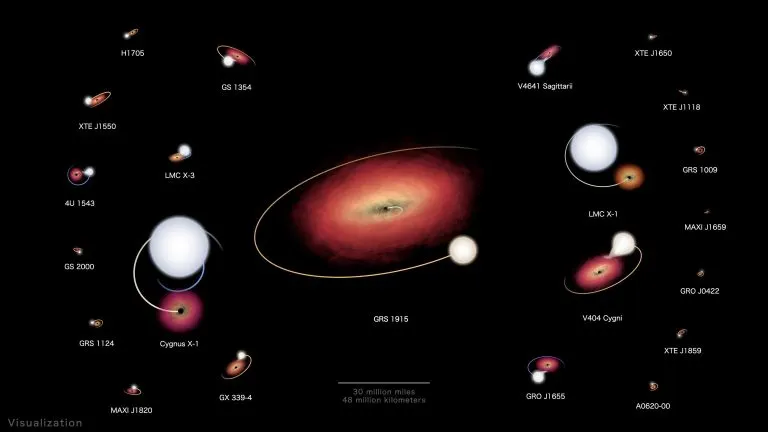A video released by NASA recently shows 22 X-ray binary systems in our Milky Way galaxy and its nearest neighbor, the great Magellanic galaxy, carrying confirmed stellar mass black holes These systems are depicted on the same physical scale, and their orbital motion is accelerated nearly 22000 times. The view of each binary system reproduces what we see from earth. Stars range in color from blue to white to red, representing temperatures 45% colder to five times hotter than our sun.

Although the proportion of black holes reflects their mass, all black holes are described by spheres larger than their actual size. Cygnus X-1, which shows the largest companion star, is the first proven black hole in history and weighs about 21 times as much as the sun. But its surface -- called its event horizon -- is only about 77 miles (124 kilometers). The enlarged sphere also masks the visible distortion caused by the gravitational effect of the black hole.
In most of these systems, a stream of gas flows directly from the star to the black hole, forming a wide, flat structure called an accretion disk around it. In other systems, such as Cygnus X-1, a massive star produces a thick outflow called stellar wind, some of which will be swept away by the strong gravity of the black hole. The gas in the accretion disk heats up as the material slowly rotates inward, emitting light in visible light, ultraviolet light and finally X-rays. Because accretion disks reach temperatures higher than stars, they use different color schemes.
The largest disk in the picture belongs to a binary system called GRS 1915, which spans more than the distance between mercury and the sun. Black holes themselves are shown to be larger than real ones, using spheres that reflect their mass.